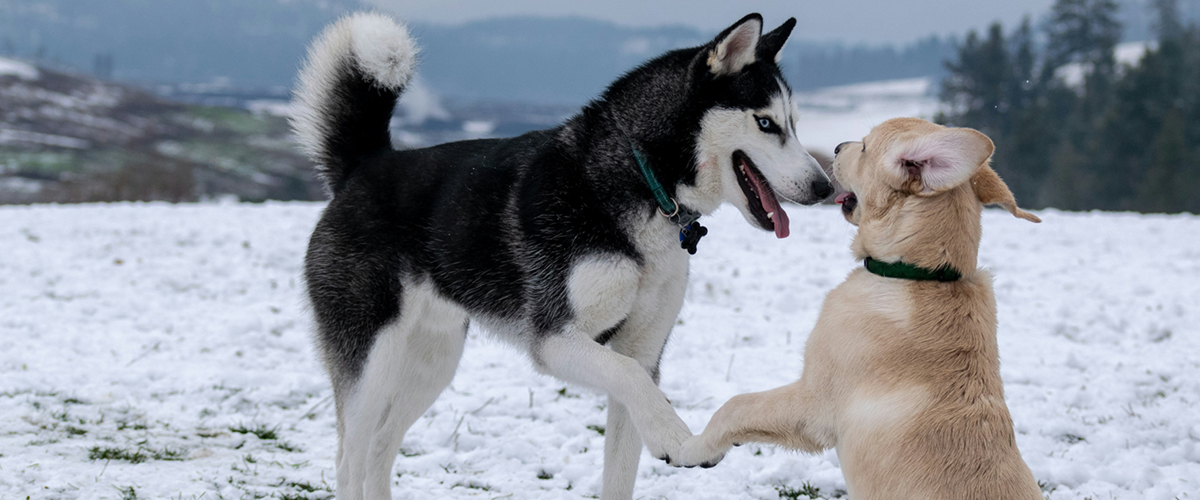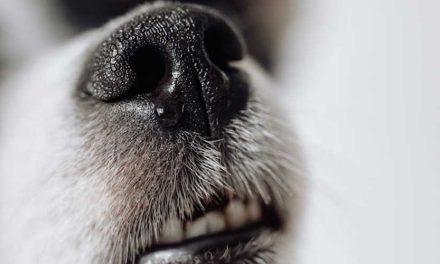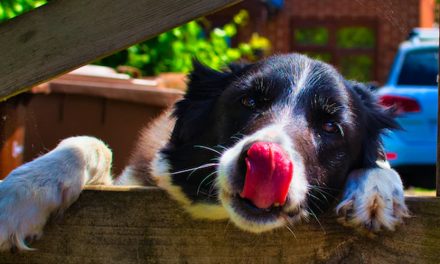In the intricate realm of dog communication, a wag of a tail, a playful bark, or a guarded stance all convey an underlying message. Dogs, social animals by nature, have a rich and nuanced language that they use not just to interact with their human companions, but also to express complex emotions among their own kind.
UNDERSTANDING DOG COMMUNICATION
Understanding this unique form of communication is not only fascinating but also deeply beneficial for dog owners who seek to enhance their relationship with their four-legged friends.
In this comprehensive exploration, we’ll dive into the various layers of dog-to-dog communication, shedding light on the auditory, visual, and olfactory signals that canines utilize to convey their intentions, establish hierarchies, and maintain social cohesion within their pack and beyond. We’ll peel back the layers of barks, body language, and sniffing behaviors to reveal the vibrant world of dog social dynamics.
AUDITORY COMMUNICATION
THE BARK BEYOND
Barks are the most recognizable form of auditory communication in dogs. They range from the jovial bark of a greeting to the authoritative bark signaling a perceived threat. Understanding the nuances can be a game-changer in deciphering social interactions. Here, we explore the meanings behind common barks and how these vocal cues influence the dog’s environment.
THE ‘HELLO’ BARK
Often characterized by a short, high pitch, and an eager wagging tail, the ‘hello’ bark signals to the recipient that the dog means no harm. It sets the tone for a friendly interaction and is typically followed by other playful actions to further assert goodwill.
THE WARNING BARK
This bark is far more assertive, with longer and more intense vocalizations. It’s a dog’s way of saying, “stay away,” or giving notice to the human in its pack that something seems off. The response of other dogs or the lack thereof might determine the next course of action in an impending situation.
THE PLAY BARK
A lighter and more staccato bark, the play bark is the dog’s equivalent of an invitation to engage in friendly roughhousing. It’s a sign that the dog is in a relaxed, playful mood and it’s a great indicator for dog owners to recognize when their pet is socializing joyfully.
VISUAL COMMUNICATION
TAIL-WAGGING TRUTHS
A dog’s body holds a trove of visual communication tools, with tail wagging being one of the most prominent. However, the message of a wagging tail isn’t always clear-cut; its direction and position can hint at different emotional states and intentions.
THE HAPPY WAG
A wide, vigorous wag often means ‘I’m happy to see you,’ but is it always a sign of friendliness? The context in which the wag occurs tells the complete story – are the ears pricked forward in excitement, or is the wag more controlled in the presence of a stranger? The happy wag typically involves the whole rear end of the dog, suggesting an open and relaxed posture.
THE NERVOUS WAG
When a dog’s tail wags low or its body is tensed, the wag can signify unease rather than joy. This contradictory movement can be confusing for humans, highlighting the importance of noting the full constellation of visual signals when interpreting a dog’s state of mind.
THE SUBMISSIVE WAG
A slow, low, and wide wag indicates submission. This tail position is often accompanied by a lowering of the body, making the dog appear smaller. It is a conciliatory gesture, signaling to a more dominant dog that there is no threat or challenge intended.
OLFACTORY COMMUNICATION
SCENT MARKING
While humans rely heavily on vision and sound, dogs are masters of the olfactory domain. Scent marking is a crucial aspect of canine communication, establishing territory and conveying a wealth of information through nuanced smells.
THE SCENT MESSAGE
When a dog sniffs a spot and then marks it with its own scent, it’s effectively leaving a business card for other dogs. Chemical signals in urine, marking one’s territory, are a form of long-distance messaging that can convey a dog’s sex, age, and reproductive status.
THE OVERMARK
When one dog re-marks a spot almost immediately after another, it can indicate a challenge or the overmarking dog’s desire to assert dominance. It’s a way for dogs to compete or communicate socially through their unique smells.
THE MUZZLE LICK
Ever witnessed your dog lick another dog’s muzzle? This is an act of submission and can also be a way of obtaining information through scent. The submissive dog is effectively analyzing the other dog’s scent cues, which can be particularly important when meeting a new pack member or leader.
NAVIGATING A WORLD OF ODORS
THE SIGNIFICANCE OF SCENT
To grasp the depth of olfactory communication in dogs, it’s important to consider the role of various body odors and their social implications. From feces to anal sac secretions, each odor tells a story in the canine world, and understanding these can enrich the interpretation of dog interactions.
THE SCENT OF FECES
While feces may repulse human olfactory sensibilities, for dogs, it’s a treasure trove of information. They can learn about a dog’s diet and health, key factors in assessing an individual’s strength and well-being in the wild.
ANAL SACS: THE CANINE CALLING CARD
Anal sac secretions are among the most pungent odors dogs possess, and they serve a critical role in identification. When dogs sniff one another’s anal sacs, they are exchanging not just odor, but detailed information about their own identities and recent activities.
GENERAL OLFACTORY MESSAGES
Beyond specific odors, dogs use their acute sense of smell to read the general emotional and health status of their peers. Illness, stress, and even reproductive cycles can all be signaled through body odors, creating a rich tapestry of information for those who speak the language of scent.
In excelling at understanding and interpreting the complex language of canine communication—be it auditory, visual, or olfactory—dog owners can champion a more fulfilling and harmonious relationship with their pets. By tuning in to the cues their dogs provide, they’ll not only gain insights into their pet’s world but also potentially avoid misunderstandings and conflicts that may arise in inter-canine encounters. In the end, it’s a conversation worth listening to, watching, and indeed, smelling, for anyone who considers themselves a true friend to man’s best friend.
Credit: Original Photo by Karl Anderson on Unsplash








